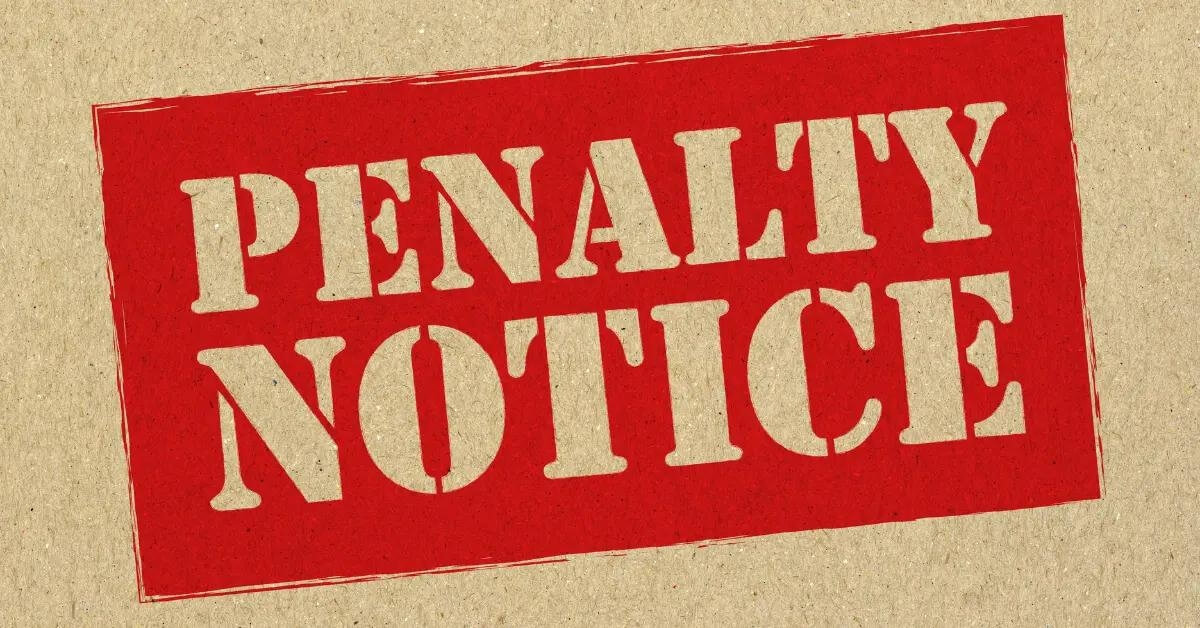Ever felt like you’re walking a tightrope when dealing with the IRS? You know, that precarious balancing act where one misstep could lead to an unpleasant tumble into tax debt. That’s how many of us feel when we have outstanding federal taxes and are looking for ways to repay them without causing financial distress.
If you’ve ever been in this situation, then it’s likely you’ve come across Form 433-d. This form might seem intimidating at first glance, but trust me – it’s your lifeline, your safety net on this high-wire act. It offers hope in what can sometimes feel like a daunting process: setting up a streamlined installment agreement with the IRS.
go through the entire process of filling out Form 433-D. This article will explain the intent of Form 433-D, who can use it, and provide a thorough guide on how to accurately complete it.
Understanding Form 433-D and Its Role in IRS Installment Agreements
An IRS installment agreement is an option to manage federal tax debt, and Form 433-D serves as the finalizing document for direct debit payments from your bank account. This is where Form 433-D, also known as the Installment Agreement form, comes into play.
This IRS form serves a key purpose – it finalizes your payment plan by collecting all necessary details for direct debit payments from your bank account. The IRS necessitates your SSN, routing number, and bank account details for the Installment Agreement form (433-D).
The Specifics of Form 433-D
Form 433-D is part of a series called ‘the 433 forms’. These collect info about taxpayers’ income, expenses, assets, and debts. Unlike other forms that might be used to file tax returns or address delinquent employment taxes,
This specific document helps set up monthly payments directly from your bank to pay off what you owe in federal income taxes over time. By doing so,
You can avoid serious consequences like a tax lien on property or wage garnishment while keeping everything tidy with Uncle Sam.
Navigating Direct Debit Payments & Monthly Commitments
Filling out this form requires providing precise banking data including both checking account numbers along with their corresponding routing digits for successful direct debit installment agreements.
The good news? It lets automatic withdrawals happen smoothly every month without any need for manual action from you. So no more forgetting due dates.
Critical Details: Fees & Timely Submission
A word of caution though – setting up such an agreement isn’t free. There’s a fee charged by the IRS, to be precise – $225. While this might seem like a big chunk,
Consider it as an investment towards gaining control over your financial future by managing tax debts responsibly.
The most important part? Make sure you submit Form 433-D timely and accurately because errors can lead to delays or even rejection of your installment agreement request.
Key Takeaway:
IRS Form 433-D helps manage tax debts by setting up an installment agreement. This form finalizes your payment plan, allowing monthly auto-withdrawals from your bank account to the IRS. It requires precise banking details and comes with a fee of $225. But remember, accuracy is key – mistakes can delay or even derail your agreement.
Form 433-D, a critical IRS document, lets you set up monthly direct debit payments to manage federal tax debts. By giving the needed banking details and paying a $225 fee, you can dodge harsh results like property liens or wage garnishments. But remember – being correct is vital. Send this form on time and without mistakes to make sure your payment process runs smoothly.
Eligibility Criteria for Filing Form 433-D
The Internal Revenue Service (IRS) designed Form 433-D, also known as the Installment Agreement, to help taxpayers who owe federal taxes but are unable to pay in a lump sum. However, not everyone qualifies to file this form.
Fundamentally, individual taxpayers must meet specific conditions before they can use this form. They should have their social security number and be able to make regular monthly payments towards their tax debt without experiencing significant financial hardship.
Specifics for Wage Earners
If you’re a wage earner, filing Form 433-D might be an option worth considering when dealing with owed federal taxes. But it’s important that your proposed monthly payments won’t push you into financial distress. If meeting these obligations would lead to considerable economic strain – something the IRS terms as ‘significant financial hardship’ – then it’s best not to use this route.
A helpful resource is available on low-income category information. It provides useful insights about what constitutes low income based on family size and could guide whether pursuing an installment agreement makes sense for your situation.
Guidelines for Self-Employed Filers
Social Security numbers aren’t just crucial identification markers; they’re also key eligibility factors if you’re self-employed and looking forward to using the Form 433-D approach toward handling back-taxes owed.
A note of caution though: Being eligible doesn’t necessarily mean that’s always the right course of action. Be sure your ability supports any agreed-upon payment plan consistently over time or risk finding yourself deeper in trouble with the IRS.
In conclusion, eligibility to file Form 433-D is not merely about being a wage earner or self-employed individual. It’s also closely tied to your financial situation and ability to make consistent monthly payments without experiencing undue hardship. So, before deciding on this path, ensure you meet these criteria and that it aligns with your overall financial strategy.
Key Takeaway:
Filing IRS Form 433-D, the Installment Agreement form requires meeting specific conditions. You need your social security number and the ability to make regular monthly payments without financial hardship.
This applies whether you’re a wage earner or self-employed. But remember: eligibility doesn’t mean it’s always best for you – check that it fits with your overall financial plan.
IRS Form 433-D offers a lifeline to taxpayers struggling with federal taxes. But, it’s not for everyone. You need a social security number and the ability to make regular payments without causing financial distress. Whether you’re wage-earning or self-employed, consider your overall financial situation before diving in.
Completing Your IRS Form 433-D Installment Agreement
Filing your IRS Form 433-D doesn’t have to be a headache, but accuracy is key. This form lets you set up an installment agreement for monthly payments towards your tax debt.
Providing Personal Information
Your personal information should match the data on file with the IRS exactly. It’s essential to provide accurate details like your social security number and address, as these help verify your identity.
You also need to specify which type of taxes are in question – whether they’re federal income taxes or delinquent employment taxes makes a difference. The tax periods that the agreement will cover must also be listed clearly.
Entering Bank Details
A vital part of this form involves setting up a direct debit from your bank account – so get those digits right.
The routing number identifies where your account was opened; it’s usually found at the bottom left corner of checks issued by your bank. On its side, typically separated by symbols such as “:” is the account number – make sure not to confuse these two numbers.
-
- If there’s no checkbook handy (or if deciphering tiny print isn’t fun), contact customer service at your bank and ask them for both numbers directly.
-
- If preferred, some banks may even offer this info online after securely logging into their website or mobile app.
As a rule of thumb, remember that getting something wrong could delay processing times significantly or lead to more serious problems down the line.
Although each situation varies based on individual circumstances, generally speaking, once you’ve filed this form correctly you can breathe easier knowing there’s now an approved installment agreement in place. However, it’s not a “set and forget” deal – make sure to keep up with the agreed monthly payments.
So grab your reading glasses, triple-check those details, and sign that form confidently knowing you’re taking control of your tax debt.
Key Takeaway:
Filing IRS Form 433-D is your ticket to managing tax debt through a monthly installment plan. Accuracy, from personal details to bank information, ensures smooth processing and helps avoid future complications. Remember, this isn’t a one-time deal – staying on top of payments is crucial. Take control confidently with careful detail-checking and timely action.
The Importance of Timely Payments Under an Installment Agreement
Regular monthly payments under your installment agreement with the IRS are more than just a good idea. They’re critical to keeping you in good standing and avoiding extra fees or penalties.
Your agreement requires you to make these payments on the same date each month. Establishing a routine helps ensure that all parties remain on schedule and any disruption is avoided. It’s kind of like setting a consistent bedtime for kids – once they get used to it, things run much smoother.
If there’s any hitch in this schedule, however, problems can quickly pile up. Missing payments doesn’t mean only facing late charges but could lead to even bigger headaches down the road such as termination of your agreement.
Facing Consequences For Defaulting On Your Monthly Payment
In case of defaulting on your payment plan due to missed or partial payments, be prepared for some potentially serious consequences from Uncle Sam (and he means business.). Failure may result in the termination of the entire arrangement.
According to IRS rules, if taxpayers fail their obligation by missing timely payments under an installment agreement without a valid reason like severe financial hardship or similar emergencies – well let’s say things won’t look so bright then.
Avoid The Mess By Resuming Payments ASAP
If you find yourself unable to meet a scheduled payment deadline due to bankruptcy filing or other dire circumstances don’t panic. Instead, reach out immediately because here is where “better late than never” truly applies.
The Internal Revenue Service (IRS) has been known to show understanding toward those who face sudden hardships but transparency and communication are key here folks. Once back on track, you’ll need to resume payments as quickly as possible and may have to pay a fee for reinstating your agreement.
Remember folks, when it comes down to handling tax collection matters with the IRS, regularity and punctuality are not just virtues but necessities.
Key Takeaway:
Making regular, timely payments on your IRS installment agreement is crucial to avoid penalties and maintain good standing. A hiccup in this schedule can lead to serious consequences like termination of the agreement. If hardship prevents you from meeting a payment deadline, reach out immediately – remember “better late than never.” Regularity and punctuality are key when dealing with tax matters.
Direct Debit Installment Agreements vs. Mailing Payments
The tax world is filled with forms, and knowing when to use which one can be a challenge. Here we’ll focus on two key players: Form 433-D, used for direct debit installment agreements, and Form 9465, utilized for mailing payments.
What’s the difference?
In essence, they both facilitate monthly payment plans for taxpayers who owe federal taxes but have distinct methods of payment collection.
Enter Direct Debit
A Direct Debit Installment Agreement (DDIA) uses Form 433-D. With this agreement in place, your owed amounts are directly debited from your checking account each month until the debt is fully paid off. This eliminates worries about missing due dates or misplacing checks. But it also means you need to make sure there’s enough money in your bank account every time a withdrawal occurs; otherwise, you may face penalties.
Flying Through Snail Mail
If you’re not keen on giving Uncle Sam direct access to your bank account via Form 433-D, then opting for good old-fashioned mail might suit you better – that’s where Form 9465 comes into play.
Note: Remember folks – late delivery doesn’t count as an excuse if your check arrives past its due date using this method.
To Choose Or Not To Choose?
Determining whether DDIA or mailed payments work best depends largely on personal preference and financial discipline.
If convenience matters more than control, a direct debit installment agreement using Form 433-D is the way to go.
However, if you like to keep a close eye on every check that leaves your hand (or account), then Form 9465 might be more up your alley.
The Bottom Line?
Whichever path you decide to take, always remember that being prompt is key.
Key Takeaway:
Choosing Your Tax Payment Method: Form 433-D lets you set up direct debit installment agreements, pulling your owed amounts from your checking account monthly. Perfect if convenience tops control. But if keeping a close eye on each payment is more your style, opt for mailing checks using Form 9465. Remember – promptness in payments is crucial.
Navigating Partial Payment Installment Agreements
So, you’re knee-deep in federal taxes and seeking a life raft. Enter the Form 433-D, your pathway to a partial payment installment agreement (PPIA). This could be just the ticket for those who owe federal income tax but can’t make full monthly payments.
A PPIA lets taxpayers reduce their tax debt by making manageable monthly payments toward their outstanding balance. The IRS will evaluate your application based on factors like your income, expenses, and asset equity before approving an installment agreement request.
Understanding Reinstatement Fees
If it feels like navigating through treacherous waters – hang tight. We’re here to help break down even the tricky bits like reinstatement fees associated with PPIAs.
Imagine this scenario: You’ve been sailing smoothly along with regular direct debit payments from your bank account using Form 433-D’s details when suddenly there’s a hiccup – maybe you miss a couple of payments or fail to file future returns. That would cause some choppy seas.
The IRS doesn’t take kindly to such breaches and might slap on what they call ‘reinstatement fees’. Currently set at $89, these are charged if taxpayers default on their agreements due to missed or insufficiently funded installments.
This isn’t all bad news though; think of it as motivation to keep up with those agreed-upon debits from checking accounts because resuming timely repayments is key after any slip-ups.
You may also need an initial lump-sum payment when setting up these plans – so remember not everything is spread over time.
All aboard now? Great. Navigating these waters can seem a bit daunting at first, but armed with the right information and tools like Form 433-D, you’ll be on your way to calmer seas in no time.
Key Takeaway:
you can navigate this process smoothly. Just make sure you’re up-to-date with your tax filings and keep those monthly payments consistent. And remember, help is always available if you find yourself in a bind.
Sending Your Form 433-D to the IRS
Once you’ve completed your Form 433-D (Installment Agreement), it’s time to get it into the right hands at the Internal Revenue Service. The process might seem daunting, but we’re here to help make things easier.
Mailing Instructions for Form 433-D
Your signed and filled-out form is ready for mailing now. Make sure that all necessary sections are accurately filled – bank account details, social security number, address – before putting pen on paper for signature.
It’s important not only where you send this form but also how. Sending via certified mail with the return receipt requested gives you proof of submission in case any questions arise later about whether or not the IRS received your document.
The Importance of Timing
A key aspect often overlooked is timing. File IRS forms promptly after completion because delays could potentially complicate matters further down the line. This goes especially true if you have tax periods due soon or already owe federal taxes.
Where To Send Your Completed Form?
This question isn’t as simple as it sounds since there are different processing centers depending on where you live in the United States; so let me break this down by region:
-
- If residing in Florida, Louisiana, Mississippi or Texas then mail your forms directly to: Internal Revenue Service Center Austin TX 73301-0215 USA;
-
- If located outside these states use the following address instead: Department of Treasury/Internal Revenue Service Ogden UT 84201-0045 USA.
Careful Consideration Of Direct Debit Installment Agreements
It’s worth mentioning that if you’re filing for a direct debit installment agreement, double-check your bank account and routing number. Mistakes here could lead to issues with monthly payments, which might further complicate the situation.
After Sending Form 433-D
Great job, you’ve done your part by mailing the form. Now, just relax and wait to hear back. We appreciate your effort.
Key Takeaway:
After filling out your Form 433-D, mail it promptly to the IRS. Make sure all details are correct and send it via certified mail for proof of submission. The address depends on where you live in the US. If applying for a direct debit installment agreement, double-check your bank account info to avoid payment issues.
Conquer IRS Form 433-D with Help From Silver Tax Group
Conquering Form 433-D doesn’t have to be a high-wire act. Having the correct data, you can take on it with assurance.
Now you understand how vital this form is in managing your tax debts through an installment agreement. You’ve learned who’s eligible and what specifics apply to wage earners and self-employed filers.
You’ve grasped the importance of providing accurate personal details and bank account numbers correctly on Form 433-D, along with timely payments to avoid penalties or defaulting on your agreement.
Differences between direct debit installment agreements versus mailing payments are clear now too. Plus, if partial payment is necessary, you know when reinstatement fees come into play.
All set? Then take that step forward confidently! Contact Silver Tax Group today!








